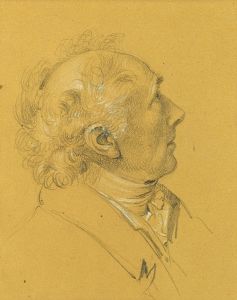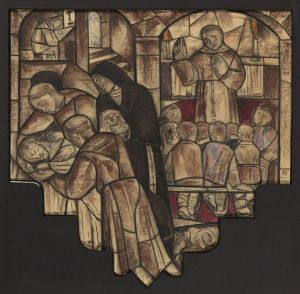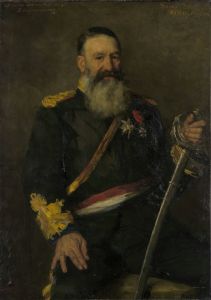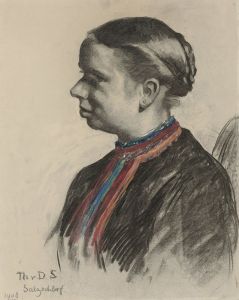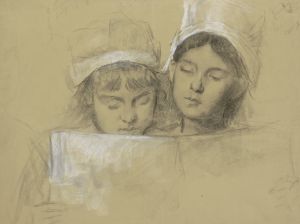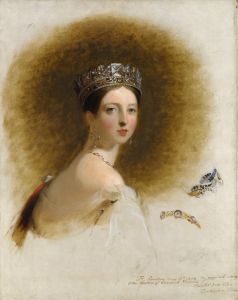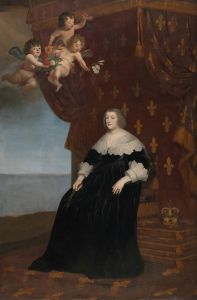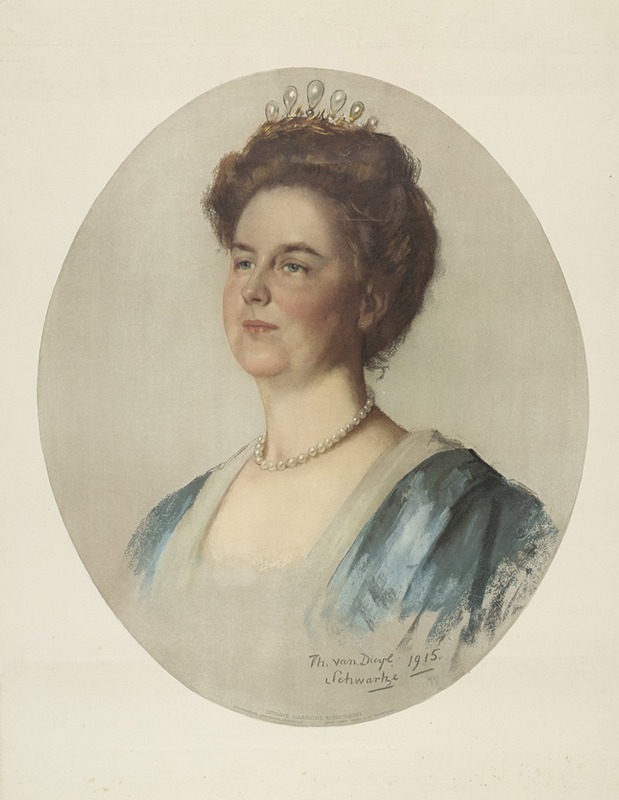
Portret van Wilhelmina, koningin der Nederlanden
A hand-painted replica of Thérèse Schwartze’s masterpiece Portret van Wilhelmina, koningin der Nederlanden, meticulously crafted by professional artists to capture the true essence of the original. Each piece is created with museum-quality canvas and rare mineral pigments, carefully painted by experienced artists with delicate brushstrokes and rich, layered colors to perfectly recreate the texture of the original artwork. Unlike machine-printed reproductions, this hand-painted version brings the painting to life, infused with the artist’s emotions and skill in every stroke. Whether for personal collection or home decoration, it instantly elevates the artistic atmosphere of any space.
Thérèse Schwartze's "Portret van Wilhelmina, koningin der Nederlanden" is a distinguished painting that captures Queen Wilhelmina of the Netherlands. Thérèse Schwartze, a renowned Dutch portrait artist, completed this work in 1898, the same year Wilhelmina ascended to the throne. Schwartze was celebrated for her ability to convey the character and status of her subjects, and this portrait is a testament to her skill.
The painting depicts Queen Wilhelmina at the age of 18, shortly after she became queen following the death of her father, King William III. Wilhelmina is portrayed in regal attire, reflecting her new role as the monarch. The portrait is notable for its attention to detail, particularly in the rendering of the queen's elaborate gown and the subtle expression on her face, which conveys both youth and a sense of responsibility.
Thérèse Schwartze was a prominent figure in the art world during her time, known for her portraits of the Dutch elite and royal family members. Her ability to capture the essence of her subjects made her a sought-after portraitist. Schwartze's work is characterized by a realistic style, with a focus on the play of light and shadow, which adds depth and dimension to her paintings.
The portrait of Queen Wilhelmina is housed in the collection of the Rijksmuseum in Amsterdam, one of the most prestigious museums in the Netherlands. The museum's collection includes a wide range of Dutch art, and Schwartze's portrait of Wilhelmina is an important piece within this context, offering insight into the period's royal iconography and the role of portraiture in documenting historical figures.
Queen Wilhelmina's reign was significant in Dutch history, as she led the nation through both World War I and World War II, despite the challenges posed by these global conflicts. Her leadership and resilience made her a beloved figure in the Netherlands, and Schwartze's portrait captures her at the beginning of this influential reign.
The painting is executed in oil on canvas, a medium that Schwartze mastered, allowing her to create rich textures and lifelike representations. The use of color in the portrait is particularly striking, with the deep hues of the queen's attire contrasting with the softer tones of her complexion and the background, drawing the viewer's attention to her face.
In summary, Thérèse Schwartze's "Portret van Wilhelmina, koningin der Nederlanden" is a masterful depiction of one of the Netherlands' most significant monarchs. The painting not only showcases Schwartze's exceptional talent as a portrait artist but also serves as a historical document, capturing a pivotal moment in Dutch history. The portrait remains an important part of the Rijksmuseum's collection, offering visitors a glimpse into the life and legacy of Queen Wilhelmina.






